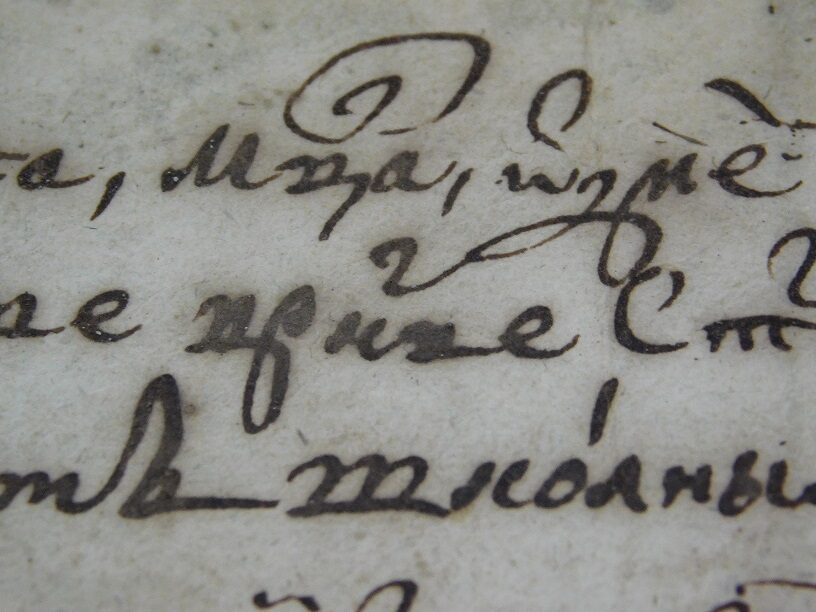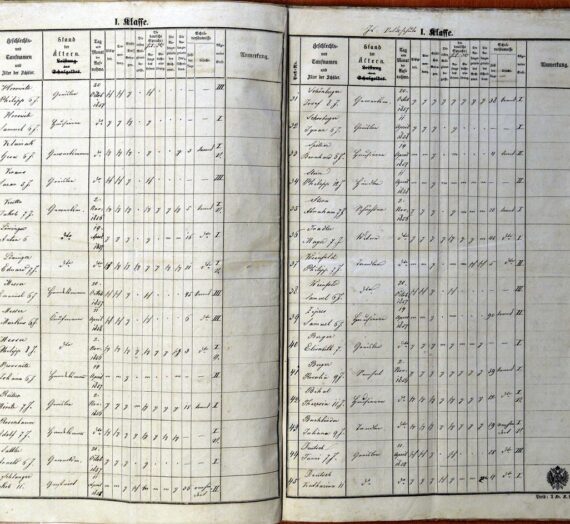AUTHOR: Kristijan Obšust
This text was presented at the International Scientific Conference entitled “Publications and Libraries in Southeast Europe: From the 17th Century to Today’s Challenges”, at the Regional Press Institute (RPI) in Chania, Crete. The conference was held on April 24, 2024. organized by the Yannis and Eleni Garedakis Museum of Typography, the National and Kapodistrian University of Athens (NKUA) and the Adligat Museum of Serbian Literature and Books (Serbia).
In this short presentation, I will highlight crucial aspects that deal with the basic definitions and functions of special libraries in archives, as well as the importance of publishing as part of the main project activities of archives as public cultural institutions that are primarily focused on the preservation of archival records. In other words, via a case study of its application in the Archives of Vojvodina in the last six years, I will highlight how the increase in the amount of published works can increase the visibility of archives, create an interdisciplinary approach to archival science, achieve international cooperation, and most of all, create new groups of users.
Libraries in archives are represented in the form of so-called special libraries which also coresponds to their definition in the current law regarding library and information services of the Republic of Serbia which also defines them as special. The library fond in archives’ libraries is different from those in other public libraries since it is comprised of books and serial publications from the fields of archival sciences, history, other social sciences and the humanities, as well as literature that deals with judicial topics such as texts concerning previous and current laws. Taking this into account, the users of archival special libraries are first and foremost researchers who, according to their profession, belong to scholarly groups of individuals such as historians, archivists, and professors, but also other individuals such as people who research their family tree or lawyers who use archival libraries as well as specific archival records in order to obtain certain rights for citizens such as restitution of immovable property, rehabilitation of individuals that were condemned in a judicial proceeding, acquiring rights to seniority and similar examples. The library fond in archival special libraries is, because of numerous rare publications, given to individuals to use exclusively in the archival reading room. Archival libraries have important national significance, and in them, users are actually granted uninterrupted access to various types of information. In that sense, they represent, in the modern social context, so-called hybrid libraries, meaning that their activity depicts a continuity between previous conventional libraries and modern digital libraries. In other words, information, besides being in paper form, also exists in digital format in the specific form of a media library.
The Archives of Vojvodina Library represents a separate unit within the Department for Documentation, Information and Information System, which is one of six internal organizational units, or in other words, one of the departments of this institution. The Library as well as the research room, aka the Reading Room, also serve as an information center where information is sought and given and which provides service to users and researchers every day. The library fond is accesable to the employees in the Archives of Vojvodina while the publications may be used only within the offices of the Archives. The library materials ease, help and contribute to the development of all tasks pertaining to all segments of archival activities. Individuals that research archival records in the Archives of Vojvodina may also use library materials, meaning the library fond, but only inside the research room, aka the Reading Room, of the Archives of Vojvodina. Library materials are used in the same manner as archival records, which is regulated by the Law on Archival Material and Archival Activities, as well as the Resolution on the Manner of Usage of Archival Records in the Archives of Vojvodina. According to national typology, the Archives of Vojvodina Library is a special-closed type of library that differs from public libraries. What differentiates special libraries from others is the type of materials that they gather and the manner in which they are used, which I already mentioned. According to their form, they are meant for a small group of users. In light of this, the development, goals, and activity of the Library depends on the work policy of the Archives of Vojvodina, of which it is a crucial component. The mere fact that it functions within the Archives of Vojvodina creates a need for a special approach during the planning, organization, and usage of its library fond. The Library today holds over 13 000 works, both domestic and foreign scholarly literature, and over 6 000 exemplars in journals in the fields of archival sciences, national and general history, rights, education, librarianship, sociology, religion, art, economy and so on. The Library possesses 167 rarities (books written before 1867), and the oldest book that it stores was printed in 1759. The acquisition of new books is determined based on the needs of the users, the goals, tasks and the available finances. The methods of acquiring them are the following: the exchange of publications between similar institutions, a gift as an unplanned way of adding to the fond, as a mandatory copy, and by purchasing. The most common types of library materials are dictionaries, encyclopedias, manuals, bibliographies, catalogs, annual publications, journals and in recent years some periodical literature. Every year the catalogs inside the Library are arranged. The program that is used at the Archives of Vojvodina Library was chosen to function on a national level and represents a common electronic catalog – BISIS. The electronic catalog is available via the computer web to both the employees and the researchers.
The library fond of the Archives of Vojvodina Library has been significantly enlarged while the Library has become more accessible for users in light of the new business policy of the Archives of Vojvodina which was established with the arrival of the new management six years ago. However, before we highlight how the increase in the scope of publication activities has contributed to the visibility of the Archives, the creation of interdisciplinary approaches in archival sciences and the creation of a new audience of users and a new recognizable identity for the institution, we will first highlight the main activities of the Archives of Vojvodina.
The Archives of Vojvodina is the second most important archive and one of three largest archives on the territory of the Republic of Serbia. It was founded in 1926 at the behest of the intellectual and political elites of the day. It is located in the historical core of the city of Novi Sad, which is the second-largest city on the territory of the Republic of Serbia and the capital city of the Autonomous Province of Vojvodina, which is an autonomous territory in the northern parts of Serbia. In that sense, the Archives of Vojvodina is the main archive on the territory of the Autonomous Province of Vojvodina under whose authority are nine inter-municipal archives located in cities in Serbia’s northern province.
From its founding to today, the Archives of Vojvodina has walked a long and hard road in order to fulfill its first and most important task, to protect archival records as a cultural heritage. During almost a hundred years of its existence, it has truly gone through a dynamic process of development. Near the end of the 1980s, it was relocated to a building that was adapted to its needs and which is under the protection of the state as a cultural heritage. The Archives represents a public cultural institution that stores archival records and that carries out archival work. The Archives of Vojvodina records, acquires, protects, arranges, processes, publishes and enables for public usage the archival records of creators that have ceased to function, as well as materials by creators that are still active and whose archival records are older than thirty years, and also materials by notable individuals and families that were important for the political and cultural life of the Autonomous Province of Vojvodina. The Archives of Vojvodina also stores materials by provincial and state authorities, or more specifically archival records of public institutions, businesses and other creators that have in the past worked on the territory of the present-day Autonomous Province of Vojvodina. That is how the Archives stores a significant amount of archival records that were created in the Habsburg Monarchy, Austro-Hungary, the Kingdom of Serbs, Croats and Slovenes, the Kingdom of Yugoslavia, socialist Yugoslavia, Federal Republic of Yugoslavia and the Republic of Serbia. Apart from the aforementioned, the Archives also stores materials that were created outside the Autonomous Province of Vojvodina, from different time periods, that are important for the history of the province. The archival records that the Archives of Vojvodina stores, and professionaly maintains, authentically testifies about the function, life and work, as well as the political, socio-economic and cultural-historic environment in which their creators existed and functioned. The Archives currently stores over forty-five million documents, or more specifically, over 9000 meters of archival records that were created from the 12th century to 2014. The materials are spread across over 550 fonds and collections, among whom, according to their national importance, we may highlight a unique collection of diplomas and charters as well as many other rare archival materials. The materials that are stored in the Archives of Vojvodina were written in Latin, German, Hungarian, variations of literary and vernacular Serbian, as well as modern (standard) Serbian. Likewise, numerous documents were written in various languages of the ethnic communities that lived or still live on the territory of the Autonomous Province of Vojvodina. The Archives, via its main activity, inspects archival records, which are in the making, for over 730 legal state entities.
Now, let us get back to the current topic. Apart from its main activities, the Archives of Vojvodina, since its new business policies were established six years ago, has focused on promotional activities, or in other words, on projects, exhibitions and most of all publishing activities and interlibrary exchange. In that sense, the Archives currently represent a modern cultural institution with a developed system for the protection of archival records and documentary materials, as well as it being an institution that uses appropriate ways to present documents and popularize archival activities to make them more familiar to a wider audience and not only to scholars. From the middle of 2019 to today, the Archives of Vojvodina had increased its visibility tenfold, had carried out a whole set of archival and interdisciplinary projects, and had significantly expanded its exhibition and publishing activities. Likewise, in line with modern trends in today’s society, the Archives of Vojvodina has started several internet platforms as part of its publishing activity, through which it presents archival records and other scholarly content connected to archival science and similar disciplines. As a noticeable cultural institution that affirms critical remembrance culture and that strives towards more transparency and availability, the Archives of Vojvodina today, in the sense of its main and project activities as well as its publishing activities, carries the slogan ”OPENNESS – AVAILABILITY – REMEMBRANCE – IDENTITY ”.
Since the beginning of 2019, the Archives of Vojvodina has redefined its project activity, which has, among other things, resulted in significantly higher visibility of this institution. A set of protocols of cooperation with international, foreign and domestic scientific and cultural institutions, a large number of realized archival, educational and interdisciplinary projects, as well as an adequate media promotional program, have all contributed so that the Archives would become one of the most recognized institutions in the Republic of Serbia that is devoted to nurturing and affirming critical remembrance culture. At the same time, when it comes to international cooperation, the Archives of Vojvodina is one of the leading archives in the Republic of Serbia one of the most noticeable cultural institutions on a national level. The creation of a new business policy and its implementation contributed to the gradual creation of a new audience. As part of this endeavor to be more accessible to the public, the Archives has started to intensify the organization of exhibitions of archival documents in the country and abroad, organizing scholarly forums, workshops, conferences, book promotions and so on. Likewise, its gallery area has been given to other partner institutions for use, as well as art associations and independent creators, thereby creating active and interesting programs during the entire year – around two events weekly, of which one is, according to the rules, always a book promotion. The gallery area of the Archives of Vojvodina, as well as the backyard with the amphitheater, that was adapted for exhibitions, serve also for presenting numerous guest exhibitions and programs that may not be thematically related to archival sciences. With that, via its program activities, the Archives has expanded its range of activities and has added to it the function of a specific interdisciplinary cultural center.
Concerning the enormous increase in the scale of publishing activities, this is best shown by the fact that since its founding in 1926 to 2019, the total amount of publications of the Archives of Vojvodina has been lower than from 2019 to today. This fact seems unreal, especially if we take into consideration that the Archives does not sell its publications. In other words, from the aforementioned period to today, there have been over 250 works that were published, some of which were major works in national historiography that were published in several volumes. Likewise, in the past six years, the number of publications by the Archives of Vojvodina, or works where the Archives was a co-publisher, have been categorized as professional and scholarly monographs. The interdisciplinarity and diversity of the topics, as well as the co-publishing carried out with numerous foreign and domestic institutions, universities and NGOs, are the basis of the current policy of the Archives when it comes to publishing works. By forming a separate department called the Department for Publishing Activities, the capacity was achieved in order to reach new goals of promoting the Archives on both a national and international level. Apart from Serbian, the Archives of Vojvodina has till now also published several works in English, as well as in Italian, Slovak, Hungarian and even Arabic languages.
Publications by the Archives of Vojvodina are published in several editions. The books deal with various topics in the social sciences and the humanities, but they primarily focus on presenting archival records and historiography. A special segment of publishing is made up of finding aids for archival records and catalogs of archival exhibitions. Also, the Archives of Vojvodina had, several years ago, started publishing a scholarly journal, or more specifically, periodical literature. As part of its publishing activities, and while following modern challenges and tendencies in today’s society, the Archives of Vojvodina had, since the beginning of 2019 till today, initiated three web portals where scholarly and popular science articles are published, and which are registered in the ISSN center in Serbia, as well as four special platforms whereby each is meant for publishing a specific type of archival records.
At the end, it should be noted that the Archives of Vojvodina does not sell its publications, rather it distributes them to public and special libraries in the country and abroad. In that sense, the publications of the Archives of Vojvodina are located in various libraries in several dozens of different countries. With this in mind, the interlibrary exchange represents one of the more important segments of the Archives of Vojvodina’s business policy, whereby the Archives actually posts a significant amount of its publications online for free download as part of its internet presentation.
In conclusion, mainly through intensifying its activities at the publishing level, the Archives of Vojvodina has exponentially increased its visibility at a national and international level. Likewise, it has introduced interdisciplinarity in its projects and has therefore created a new group of users. Recognizing this business model as being productive, the Republic of Serbia has in succession increased the Archives’ budget when it comes to its publishing activity.



